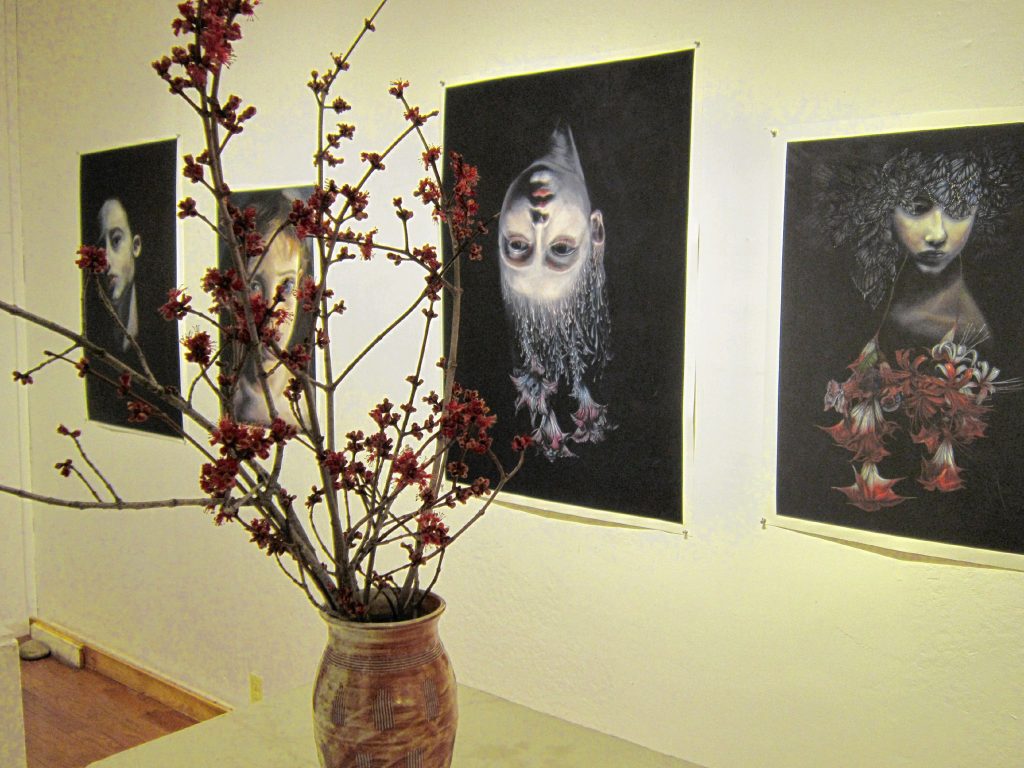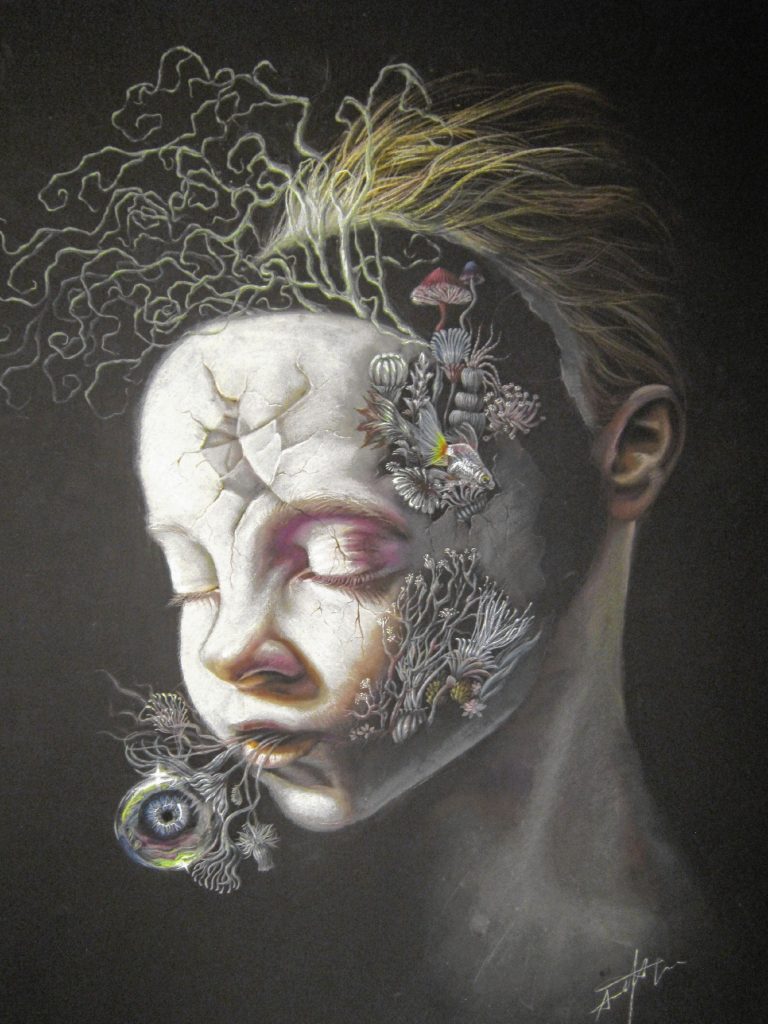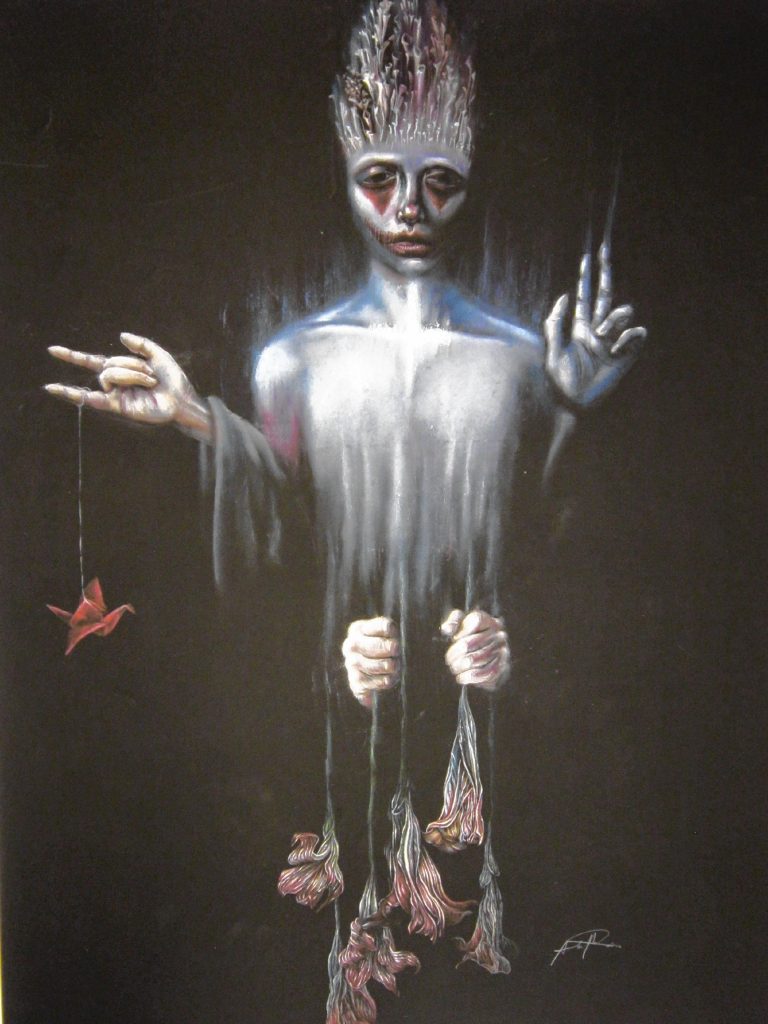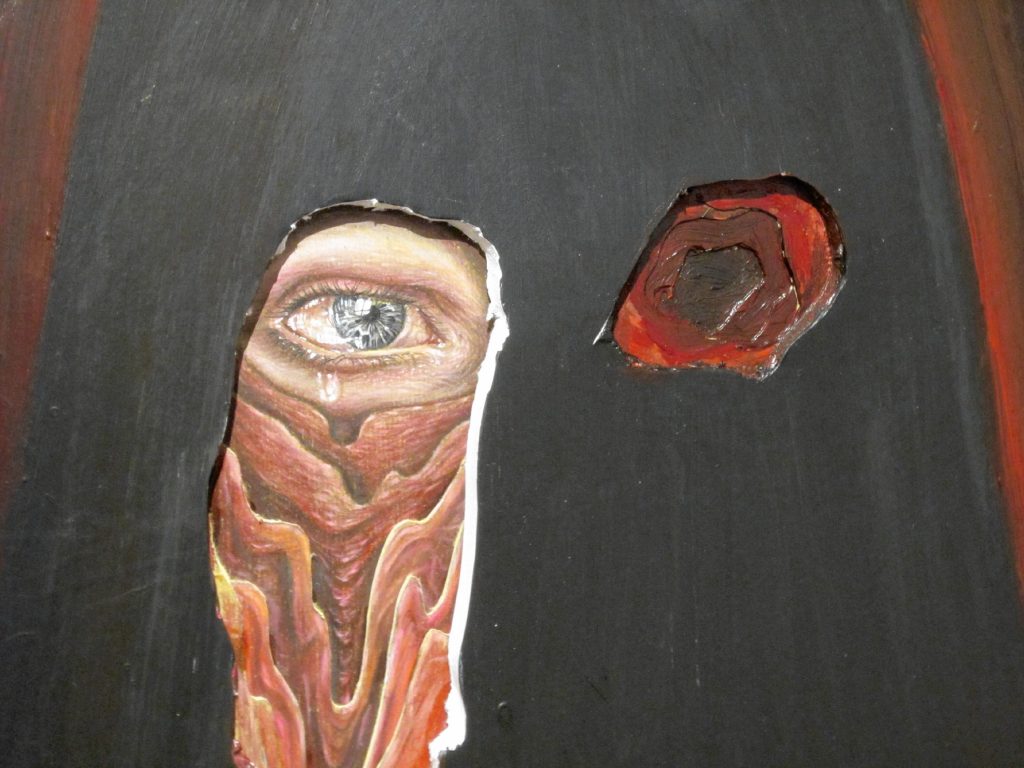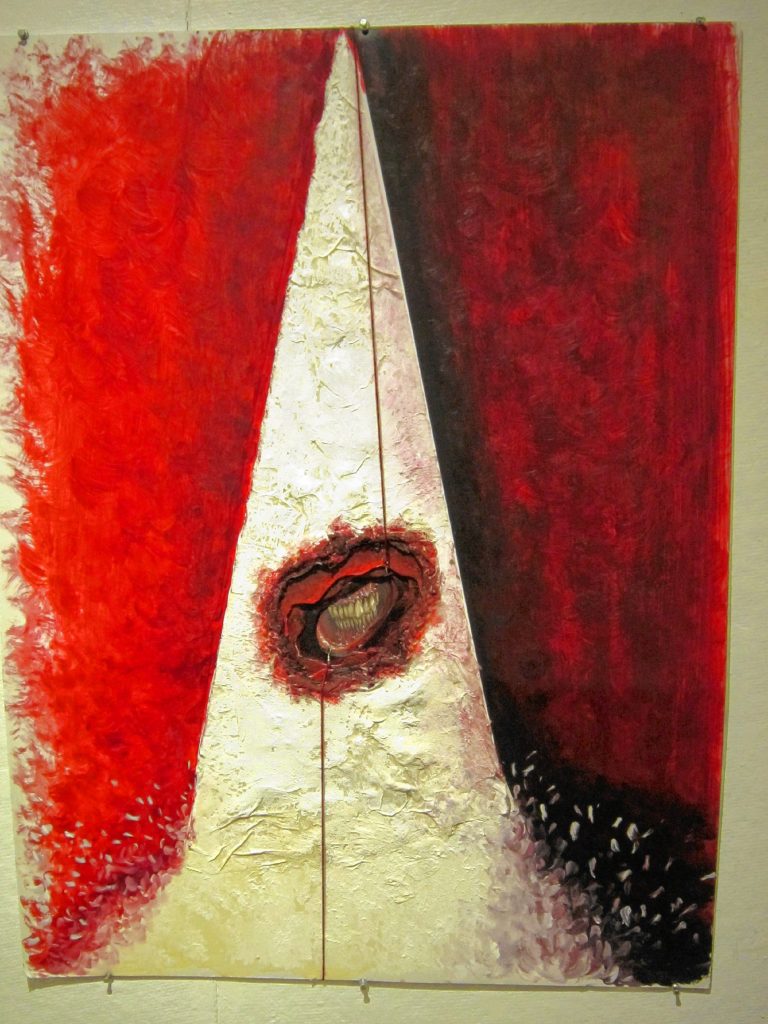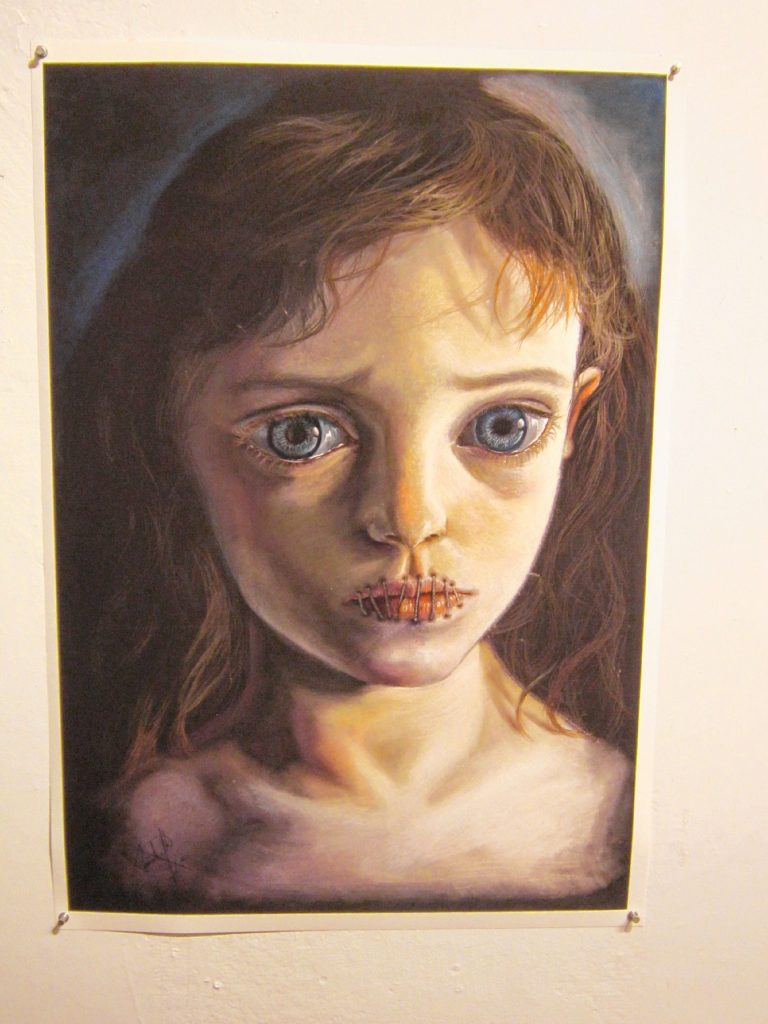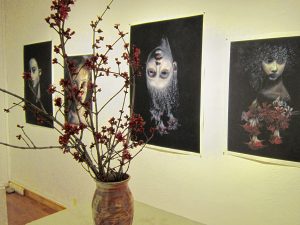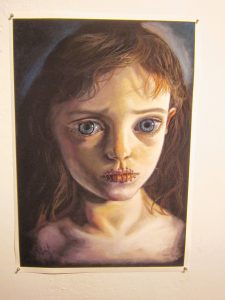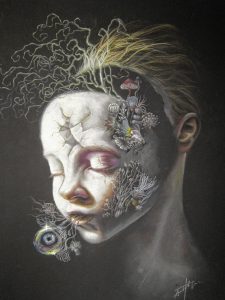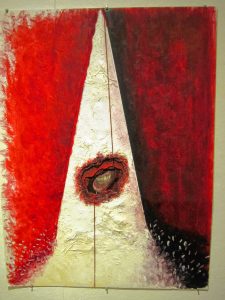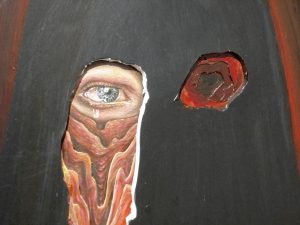The artwork of Zitong (Ann) Xu blends myth, magic, and the fantastical together to tell human stories about sorrow for “Lost Girls” at the Barnes Gallery at Leverett Crafts & Arts through the month of April.
With lifelike haunting faces of women combined with imagery out of an ancient Greek poem or the dark fairy tales of the Brothers Grimm, Xu, a senior at Northfield Mount Hermon preparatory school in Gill, presents a series of paintings about female oppression, grief, and hope through the images of cherubic young women with wide blue eyes and stitched mouths, disembodied teeth, fairy-like mythical portraits, and haunting demi-gods.
Annaliese Bischoff, an exhibit curator at the gallery, told the Valley Advocate that Xu was recently accepted into a film program at the University of California, Los Angeles, which when paired with Xu’s artist notes, adds new depth to the storytelling dimension of her works.
“Art, in whatever form, to me is a manner of storytelling,” Xu writes. “My drawing portfolio thus mainly concentrates on personal narratives, titled ‘Lost Girls.’ It is a study of my melancholia, and how it shaped my philosophy on family, sorrow, and hope. It is a journal of my personal growth; how I took initiative to derive new insights from sorrow.
She continues, “Most of all, it is a message to young adults who are experiencing mental and family struggles; to girls and women under oppression, and to people whose freedom and rights are seized, that implores them to retrieve their voice when I found that images, as they are transformed into motion pictures, are a sometimes more compelling way to convey messages.”
When the Valley Advocate visited the Leverett Gallery, the titles of the individual pieces of art had yet to be labeled. But what’s in a title? After all, it’s the art that truly speaks to an audience.
Two paintings that are immediately striking are of a young woman and a girl with sorrowful eyes and stitched mouths. Both of these paintings might be commenting on the silent nature of mental illness or of female voices being silenced. Either analysis is valid. But what’s really fascinating about these pieces, from a strictly visual perspective, is how haunted and weathered the faces of these women are. They’re almost life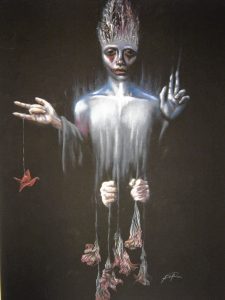 like, but contrasted with surreally unsettling, larger-than-normal eyes.
like, but contrasted with surreally unsettling, larger-than-normal eyes.
The exhibit also features a series of large to small paintings that draw upon myths, legends, and fantasy. There’s a painting of a pale young woman with trees growing out of her cracking skull; flowers bud as she breathes out of her mouth and her eyes are closed as if in the depths of hibernation.
Another piece features a genderless phantom under a rough crown made of tubules reminiscent of coral. The figure has four hands; two where hands are supposed to be, and another set coming out of its chest. The hands on the lower half of the ghostly visage are holding dead flowers; rotting and limp. The two hands above are frozen in hand signals, which appear to convey a sense of tranquility. What’s noticeable is that a crimson red crane can be seen dangling from the figure’s right hand. What meaning can we derive from this piece? It’s about the balance between life and death; with life above representing the crane and death below, both are in perfect balance.
The most macabre and gory part of the exhibit can be found with two striking pieces. The first shows a mouthful of yellowing disembodied teeth that’s posed either in menace or in a warped smile. The teeth are found in a bloody red maw; encapsulated between layers of the painting that are jagged have a rough texture and a three dimensional quality. The teeth are framed inside a white triangle surrounded by an ocean of dark red. This piece is about hate; and if you look closely it almost looks like a hooded figure representing absolute malice, which may lead some to surmise that this piece is about the evils of white supremacy.
Another shows a woman in a black hood. Her face is misshapen; the face below the left eye is deformed; layers of skin falling apart to reveal the muscle underneath. The eye is intact and teardrops swell from it. Her right eye is missing and the only thing that’s left is a hollowed out pit of gore. This scene is reminiscent of the many women who are left disfigured from acid attacks in the Middle East and this piece is probably commenting on that issue; showing the physical and emotional damage to women who have become survivors of patriarchal oppression and violence.
The lasting impression of Xu’s artwork is strong. Knowing that she’s a student at a high school level, makes the art much more impressive given her age. These are artistic works that have real depth, explore human tragedies, and comment on societal issues such as female oppression. One thing’s for sure, any movie that Xu goes on to make in film school should be a must watch.
Chris Goudreau can be reached at cgoudreau@valleyadvocate.com.
Photos by Chris Goudreau.
For more information about “Lost Girls” visit http://www.barnesgallery.org/CurrentExhibit.html

